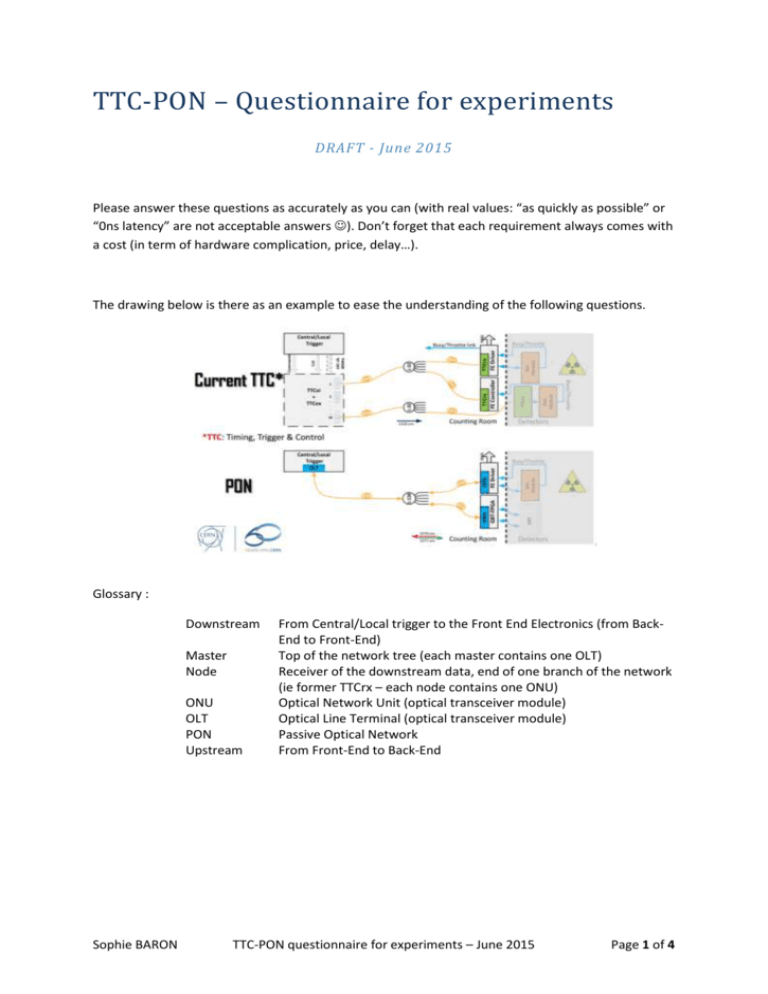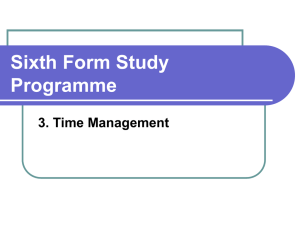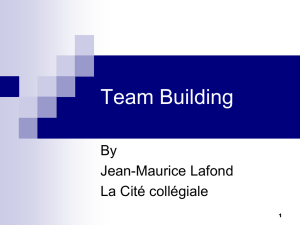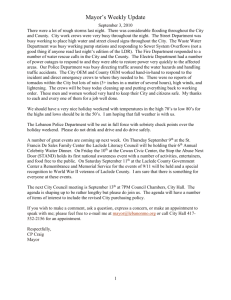TTC-PON – Questionnaire for experiments DRAFT
advertisement

TTC-PON – Questionnaire for experiments DRAFT - June 2015 Please answer these questions as accurately as you can (with real values: “as quickly as possible” or “0ns latency” are not acceptable answers ). Don’t forget that each requirement always comes with a cost (in term of hardware complication, price, delay…). The drawing below is there as an example to ease the understanding of the following questions. Glossary : Downstream Master Node ONU OLT PON Upstream Sophie BARON From Central/Local trigger to the Front End Electronics (from BackEnd to Front-End) Top of the network tree (each master contains one OLT) Receiver of the downstream data, end of one branch of the network (ie former TTCrx – each node contains one ONU) Optical Network Unit (optical transceiver module) Optical Line Terminal (optical transceiver module) Passive Optical Network From Front-End to Back-End TTC-PON questionnaire for experiments – June 2015 Page 1 of 4 1. For which type of system(s) would the TTC-PON be potentially interesting in your experiment? Timing distribution YES Trigger distribution YES Commands distribution YES Busy/Throttle YES Status read back YES Data Readout NO Event building NO Other…… NO 2. What would be the total number of nodes (ONUs) per system? Would it be possible to have several master transceivers (ie OLTs) per system? Max. number of ONU is for TPC -> 324 (ITS needs only 192). YES, we plan to have max. 3/6 OLT per LTU i.e. per detector. It depends on spit ratio. 3. Split Ratio: What is the maximum number of nodes that you might have for one single master transceiver (OLT)? 1:128 is default, but 1:64 is also not excluded if some detector needs faster busy i.e. detector will not be able to implement big buffers for some reason. 4. Will the fiber length of all the nodes be approximately the same o(10 m)? It should be possible to make it as we plan to have OLT for each detector separately. 5. Downstream Path: Do you need fixed latency downstream? YES What is the maximum latency you could afford in the downstream path? We need L0 trigger at detector FEE at 1.5 us. All L0 inputs must arrive at CTP at 1.2 us. CTP needs 100 ns in order to make decision. For 30 m cables is 150 ns. For PON is 50 ns. What maximum payload and frequency would you need for individual commands? We need 188 bits per BC, but definition is not final. What maximum payload and frequency would you need for command broadcast ? We need 188 bits per BC, but definition is not final. Event type: 8 bit Event ID (Orbit 32 bit+ BCID 12 bit): 44 bit (4.4 days) Input Mask: 44 Detector Mask: 24 Sophie BARON TTC-PON questionnaire for experiments – June 2015 Page 2 of 4 Message/Spare: 64 bit 6. Upstream path Beside the busy/throttle signal, which type of information would you like to transmit upstream (from ONUs to OLTs) Status of trigger system i.e. sending physics trigger type, sending signature, sending toggle, …… . What maximum payload and what frequency would be needed? 16 bits with each busy/throttle word (each 3.2/1.6 us). (BUSY, PHYSICS, SIGNATURE, TOGGLE, Busy FEE element 1 – 12). 7. Busy questions Currently, when a busy/throttle is issued, what time of information do the busy modules send back up to the Central Trigger System, and how fast? (busy node ID? Status? …) Single BUSY signal must come in time between L0 and L1 trigger i.e. 6.5 us. In Run3 we don`t have time restriction for BUSY for new detectors as they are triggerless. Old detectors need to send BUSY as now. What is the typical number of busy signals issued at the same time? CTP/LTU sees max. 2 BUSY signals. In Run3 is max. 324 BUSYs from TPC .+ITS/MFT/TOF… . What is the maximum number of busy signals issued at the same time during a smooth run? Actually 0, but if buffers run full then: 324.+ITS/MFT/TOF… What is the maximum time allowed for a busy to reach the CTP/CTU? Not critical for new detectors. For old detectors with TTC we are going to re-use existing copper cables, so it depends on cable lenght. Once a busy has been issued and the trigger hold, how quickly is the trigger released after the busy is released from the busy module(s). Immediately. Would it be possible to extract statistics from the control software on the questions above? As the upgraded system will be different, extraction of statistics from present system will not give information. 8. Would you be interested in having the legacy TTC overlaid on top of the PON system (sharing the same fiber) YES 9. Would you need to have some PON devices in radiation zones? If yes, which level of radiations? Sophie BARON TTC-PON questionnaire for experiments – June 2015 Page 3 of 4 YES we need ONU modules to be at 10 kRad 10. When would you need to have a frozen hardware architecture for the TTC-PON? December 2015 11. The current price of a 10G OLT is above 2.5kCHF. An ONU above 300CHF. This will decrease, but maybe not so much taking into account the short timescale we have for production. Is this acceptable? Yes. We believe that price for OLT will be lower at installation time i.e. during LS2. 12. Beside the PON system, do you have a backup solution for LS2 for the TTC/TTS? Yes, passive splitting of GBT (one direction GBT system), but we need to test it. Additional comments: Sophie BARON TTC-PON questionnaire for experiments – June 2015 Page 4 of 4






